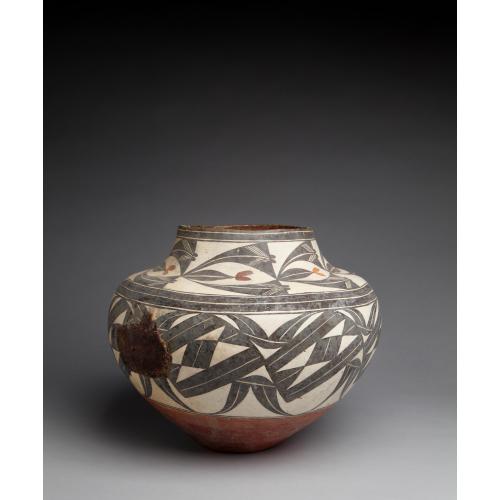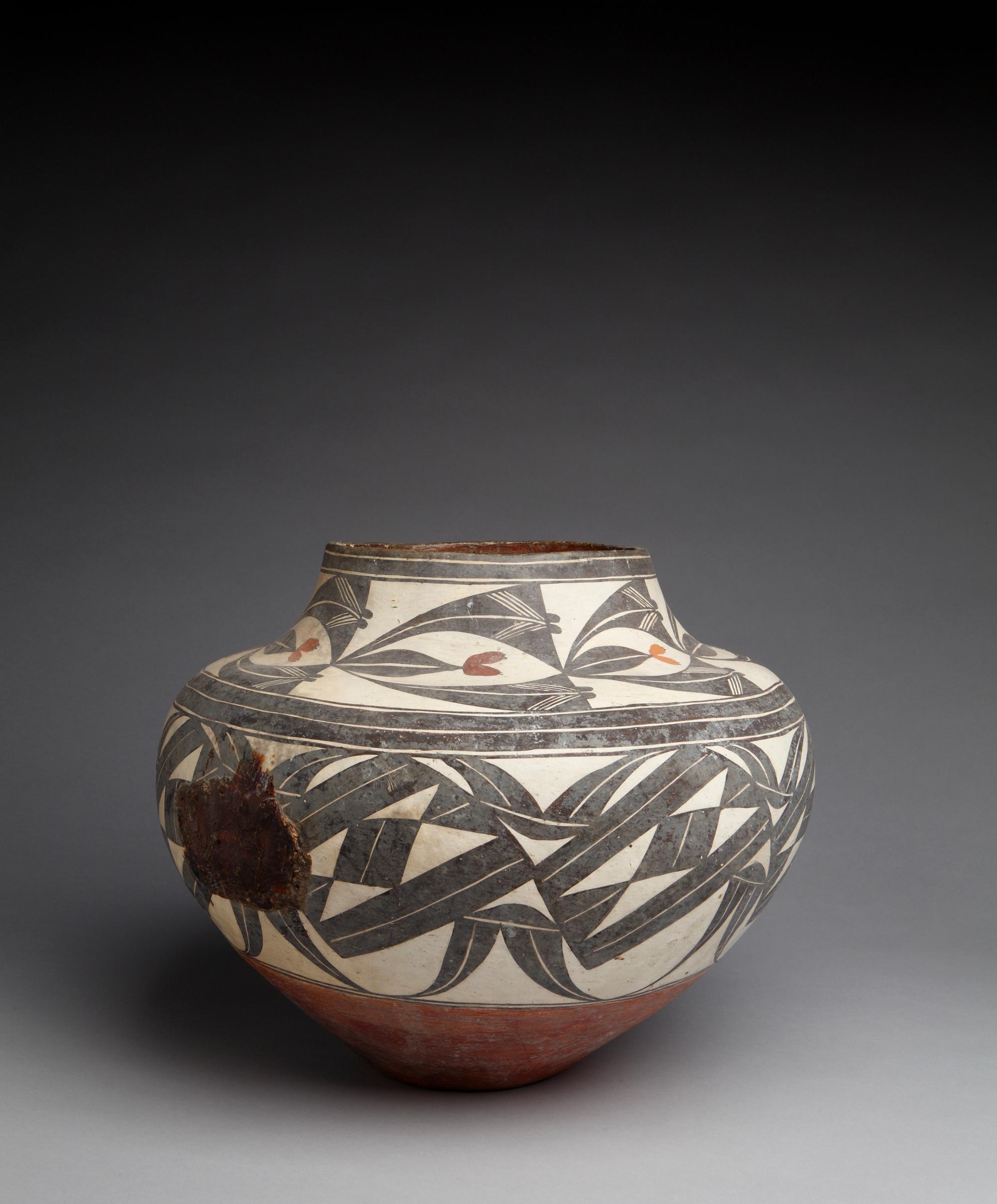
Photograph by Addison Doty. Copyright 2014 School for Advanced Research.
Water jar
Date: 1880-1890
Artist or Maker: Unknown
Dimensions:
29.2 × 35.6 cm, 2.7 kg (11 1/2 × 14 in., 5.95 lb.)
Medium: clay | paints
Credit Line: Indian Arts Fund purchase for the permanent collection, 1928.
Place Made:
Valencia County, New Mexico, Southwest, United States, North America
Object Number: IAF.1102
Not on view
Tribal Collection Review RemarksAccording to the participants in the Acoma collection review visit May 22-24, 2018 (Events Record “Collection Review: Acoma Pueblo Review 11”): The temper used in the clay to build this jar is pottery sherds and can be felt on the exterior surface. There are seven panels of design on the top band and eight panels of designs or motifs in the lower band. There is a pine pitch repair on the interior as well as exterior of the jar. The participants believe this jar is Acoma based on the design, clay, temper, and slips.
According to the participants in the Acoma collection review visit February 26-27, 2019 (Events Record “Collection Review: Acoma Pueblo Review 12”): The shape of a water jar is characterized by usually having a concave base (can also have a flat base) leading to a wider body and shoulder area. The shoulder, which is typically rounded but can also be sharp, leads inward and up to the neck and opening of the water jar. Historic water jars will sometimes have an indentation from the base the pot was built on (also known as a puki).
Water jars of all sizes are made and used. Medium to small size water jars are more commonly used to carry water as the weight of a filled water jar can become quite heavy. Large sized water jars would be used for storing water. Today at Acoma, water jars are still being used and made in both traditional natural and commercial materials.
In Collection(s)
Bibliography:
The Indian Arts Research Center, in collaboration with Native American community scholars, strives to present accurate collections records. Records may be updated as new information becomes available and is reviewed with the Native American community having cultural affinity to particular items. Please write to iarc@sarsf.org if you have questions or concerns related to the documentation.
